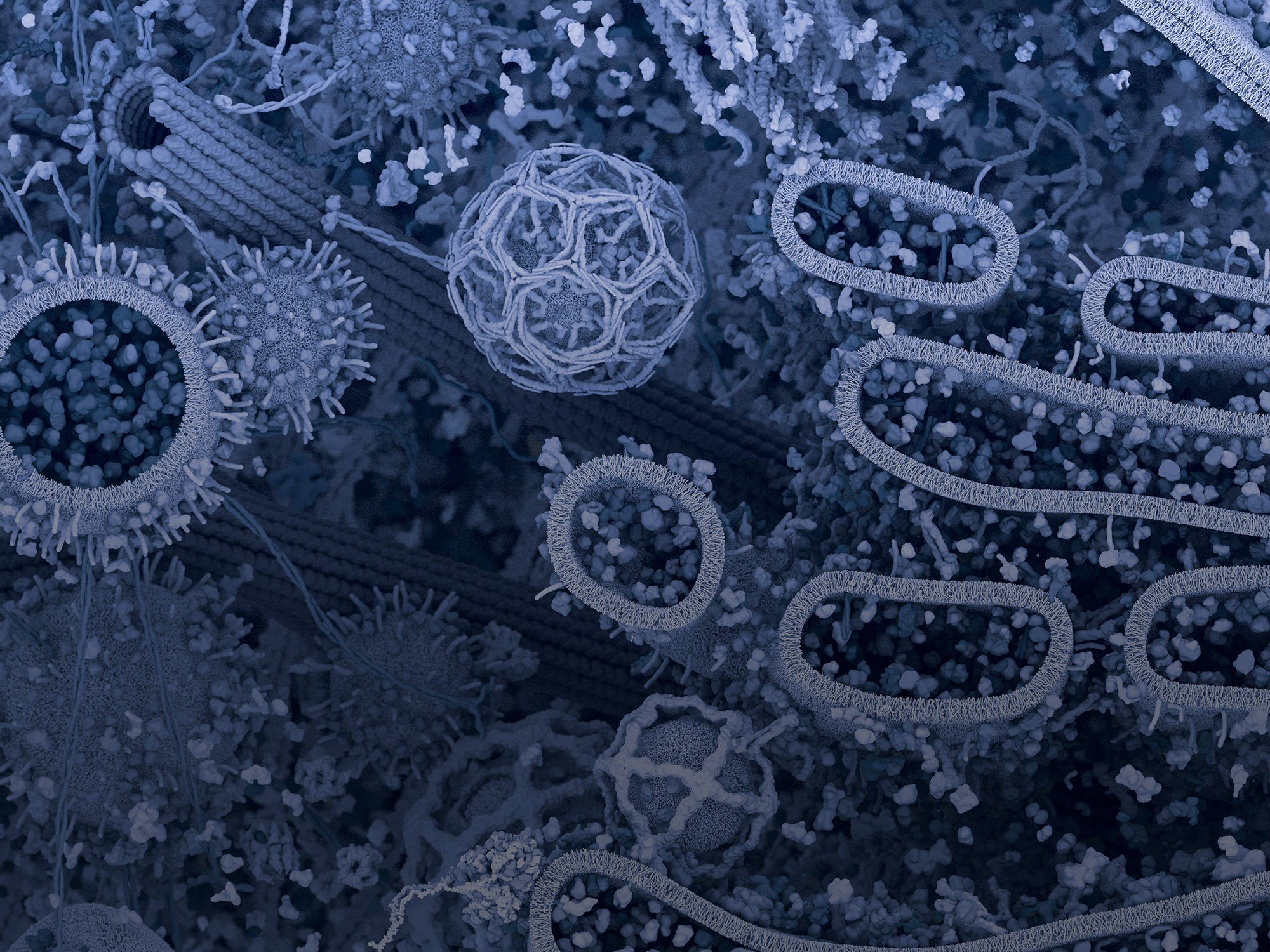For generations of neuroscientists, using immunohistochemistry to study the brain in its anatomical context typically meant imaging a tiny slice at a time. Using the traditional method of taking micron-thick sections, fixing, staining, imaging, and—finally—stitching all the slices together, is a laborious task, especially for large tissues.
But what if you could "look" into an intact mouse brain and identify specific cells and eliminate all of the slicing and stitching?
Whole, Intact Brain Imaging
In order to do so, one would have to overcome several challenges. You would have to be able to fix the organ sufficiently and uniformly to maintain its structure at both the tissue and the molecular level. After fixation, the tissue would have to be sufficiently porous, so molecules like antibodies could fully penetrate the organ. Once you’d done that, you would want to image the whole structure efficiently and faithfully. How would one accomplish such a task?
Enter whole-tissue clearing methods. I was first introduced to the idea back in 2012. As a molecular neurobiologist who’s always leveraged traditional immunostaining techniques to ask when and where my protein of interest was being expressed in cells or, better yet, brain tissue itself, I was intrigued by a Society for Neuroscience poster titled, Clarity: Technology for rapid, whole, intact-brain imaging with molecular phenotyping. I think any neuroscientist would be intrigued by the title—WHOLE INTACT-BRAIN imaging, in case you missed my bolded type-face, provided for emphasis, in the poster title!
What I saw in this poster was a unique approach to imaging the brain: make the brain completely transparent.
As it is, the brain is normally opaque, making imaging deep within the tissue problematic. To overcome these difficulties, the authors used a novel technique, called CLARITY, to fix the tissue with a hydrogel that physically supports the tissue and maintains its molecular architecture, then clearing out membrane lipids. The result was a completely transparent, whole, and intact brain that was amenable to staining and imaging using standard confocal fluorescence. In 2013, the authors of this poster shared Breakthrough of the Year honors from Science Magazine, the same year that also recognized breakthroughs in cancer immunotherapy.
Tissue Clearing Imaging Methods
Fast forward five years, and the original technology has evolved and the technique is now known more generically as tissue clearing. The new methods, which include iDisco, CUBIC, FRUIT, and SHIELD/SWITCH, seek to address some of the limitations of the original CLARITY method. The most important optimizations include more even and/or faster staining methods, which addressed the long, complex processing times and harsh conditions in the original protocol. Some processing conditions alter the structure of the tissue/protein, leading to loss of signal from both antibody-based staining (due to altered availability of the antibody epitope) and diminished fluorescence of genetically encoded tags like GFP (due to alteration of the fluorophore).
More recently, Kwanghun Chung’s laboratory at MIT described SHIELD, which uses an optimized polyepoxide fixation protocol that more faithfully maintains tissue structure and the fluorescence of GFP—a real advance since genetically-encoded GFP is used widely to mark brain cells and structures. Coupled with active labeling processing workflows that disperse antibodies homogeneously throughout relevant tissue and reduce labeling times, these methods represent advances that may make tissue clearing more reliable, efficient, and flexible to allow investigators to answer specific biological questions.
What kind of biological questions can these tissue-clearing techniques address? Questions of cellular fate in the context of specific regions, mapping of specific cell populations to reveal anatomical circuits, and examination of fine synaptic structures in an intact brain without the introduction of artifacts, are all now possible with such techniques. These questions are not limited to developmental or basic neuroscience, but are also applicable to understanding neurodegenerative diseases like Alzheimer’s disease (AD) as well.
The dynamic generation, progression, and interactions of pathological hallmarks of AD including Beta-amyloid (Aβ) plaques and neurofibrillary tangles (NFT) are thought to contribute to disease progression. But how? What type of cells and or structures do Aβ plaques interact with? Are these interactions different in early vs later stages of the disease? Does disease start in one region of the brain, perhaps with NFT in a subsection of the brain, take hold, then spread throughout the brain? What comes first, Aβ plaques or NFTs? Is it different depending on the stage of disease or region of the brain you look at?
Tissue-clearing techniques are suitable for answering such questions. Can the Aβ landscape, if you will, be examined in an intact mouse brain? The answer is yes. An example of such a landscape, generated and provided by Kwanghun Chung in collaboration with Li Huei Tsai, both from MIT, examined a whole brain from an amyloid mouse model of Alzheimer's disease stained using β-Amyloid (D54D2) XP® Rabbit mAb #8243.
Confocal reconstruction of a brain from a mouse model of Alzheimer's Disease, cleared and stained with β-Amyloid (D54D2) XP® Rabbit mAb #8243, provided by Drs. Kwanghun Chung, Li-Huei Tsai, and colleagues.
The investigators used the SHIELD tissue-clearing technique coupled with this antibody to reveal Aβ plaques throughout the brain. In an exciting advancement that may lead to a potential therapy for AD, the whole brain tissue clearing was used to observe gamma frequency stimulation-induced reduction in β-Amyloid (D54D2) identified plaques in the context of how mouse brain (1, see Supplemental Figures S3 &4).
What might be the future of this technology?
- Can superfine details at resolutions beyond the limits of optical diffraction using techniques like expansion microscopy be part of the workflow (2,3 )?
- How can this deluge of data be analyzed to generate meaningful biological insights? Can companies like LifeCanvas generate workflows that leverage automated fixation and staining machines that might make the technology more scalable, faster?
- How much antibody optimization is the end user expected to perform or can this be standardized? Can tissue clearing technologies be used to investigate hallmarks of disease beyond the brain like the tumor microenvironment?
These questions will certainly be addressed as the field matures, and $400 million/year investments by the NIH BRAIN initiative to develop such holistic-type technologies will go a long way to help investigators see what’s really going on in our brains.
Learn more about neurodegeneration on the blog:
Select References
- Martorell AJ, Paulson AL, Suk HJ, et al. Multi-sensory Gamma Stimulation Ameliorates Alzheimer's-Associated Pathology and Improves Cognition. Cell. 2019;177(2):256-271.e22. doi:10.1016/j.cell.2019.02.014
- Ku T, Swaney J, Park JY, et al. Multiplexed and scalable super-resolution imaging of three-dimensional protein localization in size-adjustable tissues. Nat Biotechnol. 2016;34(9):973-981. doi:10.1038/nbt.3641
- Wassie AT, Zhao Y, Boyden ES. Expansion microscopy: principles and uses in biological research. Nat Methods. 2019;16(1):33-41. doi:10.1038/s41592-018-0219-4


